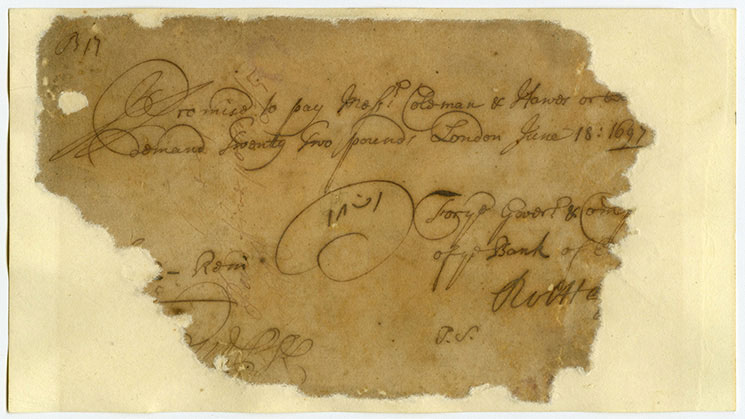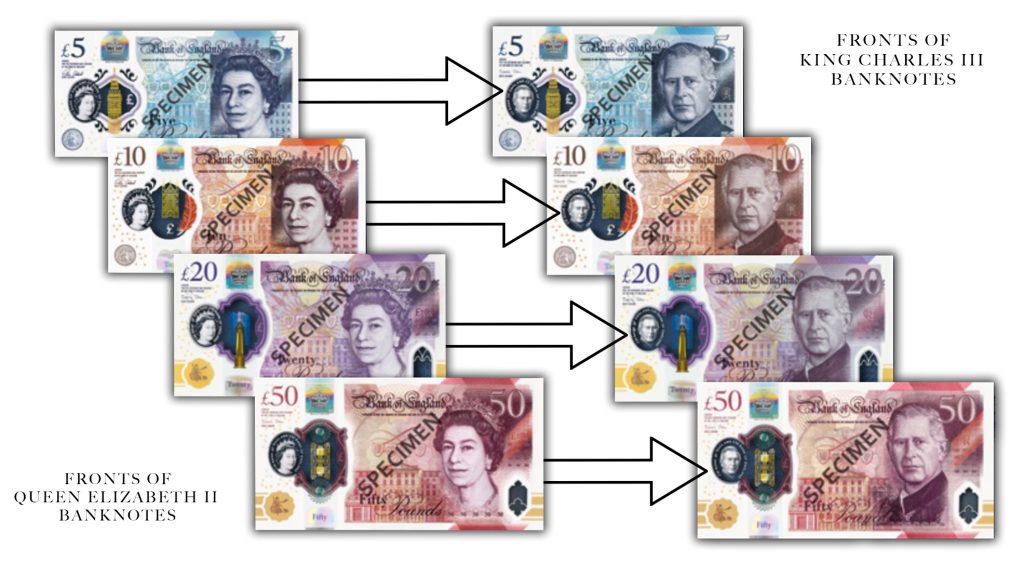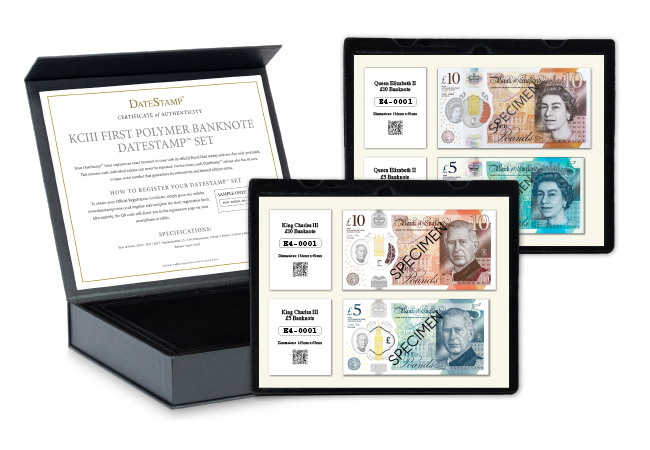Posts Tagged ‘interactive image’
The Evolution of UK Banknotes: From Paper to Precision
The history of banknotes in the United Kingdom is a fascinating journey of innovation, security, and tradition. From the earliest issues to the forthcoming King Charles III banknotes, each phase reflects the technological and cultural shifts of its time.
A Brief History of UK Banknotes
The Bank of England began issuing banknotes shortly after its establishment in 1694. Initially, these notes were handwritten, a far cry from the highly sophisticated currency we use today. By the mid-18th century, partially printed notes were introduced, with the denomination and other details filled in by hand.

Source: Bank of England website
https://www.bankofengland.co.uk/museum/online-collections/blog/our-earliest-bank-of-england-note
The 19th century brought significant changes with fully printed notes and the introduction of standardized designs to prevent forgery. A pivotal moment in the history of UK banknotes came in 1960 when Queen Elizabeth II became the first monarch to be featured on the Bank of England notes. Her portrait on the £1 note marked the beginning of a tradition of depicting reigning monarchs on the nation’s currency, providing a sense of continuity and national identity.
Security Features: From Simplicity to Sophistication
As technology advanced, so did the sophistication of banknote security features. Early notes relied heavily on the quality of the paper and intricate designs to deter counterfeiters. However, as counterfeiting techniques improved, so too did the security measures.
Modern UK banknotes are a marvel of technology and design. Click on the dots below to explore the key security features:
Introducing the King Charles III Banknotes
In a historic move, the Bank of England is set to release the new King Charles III banknotes on June 5th, 2024. This marks the first time in over 70 years that a new monarch’s portrait will grace the currency, following the reign of Queen Elizabeth II.
The King Charles III banknotes will continue to feature the same high-security features of their predecessors and the new banknotes will initially be available in £5, £10, £20, and £50 denominations. They will circulate alongside the existing Queen Elizabeth II notes, gradually phasing out the older series as they wear out.

Introducing the DateStamp™ Set: Connecting the Past and Present
To commemorate this historic transition, we are excited to introduce an exclusive DateStamp™ set that brings together the past and the present of UK currency. This unique collection features the Queen Elizabeth II £5 and £10 banknotes alongside the brand new King Charles III £5 and £10 banknotes, each postmarked on the official issue date, 5th June, 2024.
You can now be one of just 2,024 collectors to own this special set.
Click here now to pre-order yours before the official release >>
Royal Inspiration: The Story Behind the King Charles III 75th Birthday Coin Design – An Interview with Renowned Heraldic Artist, Mike Guilfoyle
Welcome to a behind-the-scenes encounter with a true artistic genius. Join us as we delve into an exclusive interview with renowned artist, Mike Guilfoyle. In this captivating interview, we’ll uncover the intricacies and insights behind his latest masterpiece– the King Charles III 75th Birthday Coin. Prepare to be enchanted by the inspiration, craftsmanship, and intricate details that make these coins a work of art, all revealed by the visionary behind the design.
You can explore the key features of the King Charles III 75th Birthday Coins, by clicking on the white dots on the interactive image below:
Click here to explore the whole King Charles III 75th Birthday Coin Range>>>

